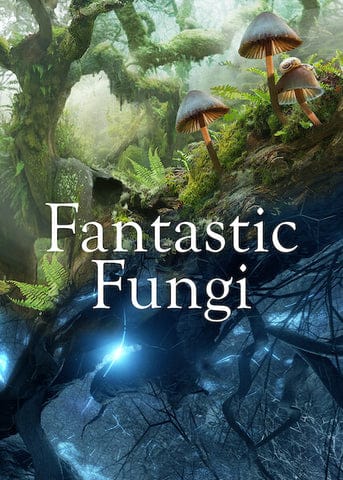
Fantastic Fungi is a documentary on Netflix about fungi. There are thousands of species of fungi all over the world, some edible, some medicinal and some poisonous. Fungi are the lymphatic system of the Earth, they break down waste, clean soil, remove toxins, absorb and store co2 underground, all the while tasting great. Whether you want to eat the Chicken of the woods, for it's similarities to chicken in texture and taste, or use Lion's Mane to strengthen your immune system and regrow nerves, the magical nature of fungi is endless.
There was an experiment using fungi, to see it's effect on waste products. In the study there were four piles saturated with diesel and other petroleum waste. One was a controlled pile, one pile was treated with enzymes, one pile treated with bacteria, and one pile was inoculated with mushroom spores. The fungi absorbs the oil so the fungi is producing enzymes for oxidases, that break carbon-hydrogen bonds. These are the same bonds that hold hydrocarbons together so the fungi becomes saturated with oil.
The scientists got a surprise when they returned six weeks later, after they removed all the tarps and all the other piles were dead, dark and stinky. The fungi pile on the other hand, was covered with hundreds of pounds of Oyster mushrooms, some of these mushrooms are very happy mushrooms, very large, which shows how much nutrition they could obtain. But something else happened, they sporulated spores which attract insects, birds then came, bringing in seeds, and that pile became an oasis of life. This shows how important fungi is to nature.
The mushroom you get is similar to an apple to a tree, as what you don't see is the vast underground covered in fungi, just how our immune system is mostly in our gut. This is called mycelium, mycelium is the vegetative part of fungus or fungus-like bacterial colony, consisting of a mass of branching, thread-like hyphae. The mass of hyphae is sometimes called Shiro, especially within the fairy ring fungi. Fungal colonies composed of mycelium are found in and around on soil and many other substrates.
Mycelium has more networks than our brain has neural pathways, and works in much the same way, with electrolytes, electrical pulses. Their the most common species on Earth their everywhere. Just to give you an idea of how much fungi are in the forest, your walking through about 300 miles of fungi, under every footstep that you take, and that's all over the world. They form these massive links, it's like a big web just growing through the forest. Mycelium that can grow out even just 3 foot can have trillions, of end branching's, almost everyone knows about the computer internet, the mycelium shares the same network design.
Tree's are communicating using the mycelium as pathways, their connecting one tree to another, their using the mycelium to feed one another, in other words one tree can swap nutrients with another tree using mycelium as the passageway. We often think kin recognition as an animal behaviour, humans love their babies, we know it's our baby and we're going to look after that baby. We never thought that plants can do that but, we're finding in our research that plants can recognize their own kin. So these mother tree's recognize their kin through their mycorrhizal networks, the mother tree and the baby seedling are sending signals talking to each other. When their connected together and carbon is moving between plants, the trees are supporting the weaker ones. If the mother tree knows that there are pests around, and that she is under danger, she will increase her competitive environment towards her own babies, so that they regenerate further away. It's a magical thing that could not happen without fungi.

Who conducted the experiment? where can i find more information about this?